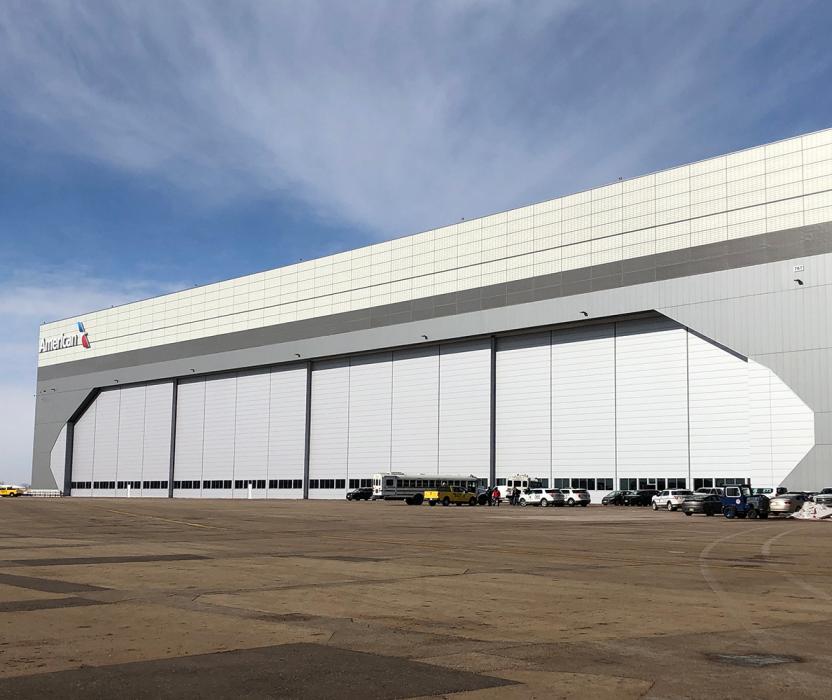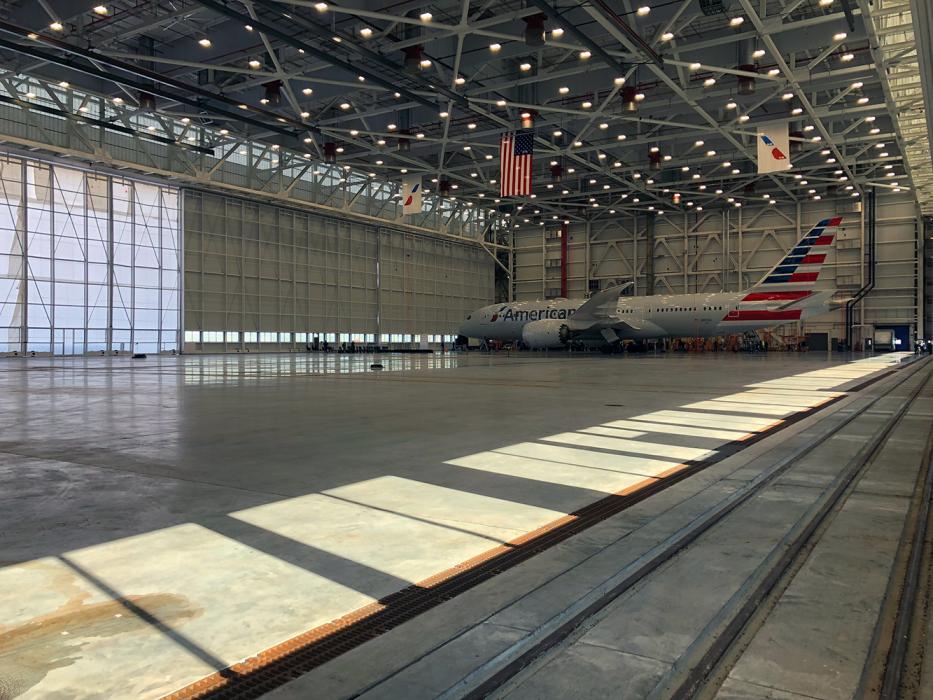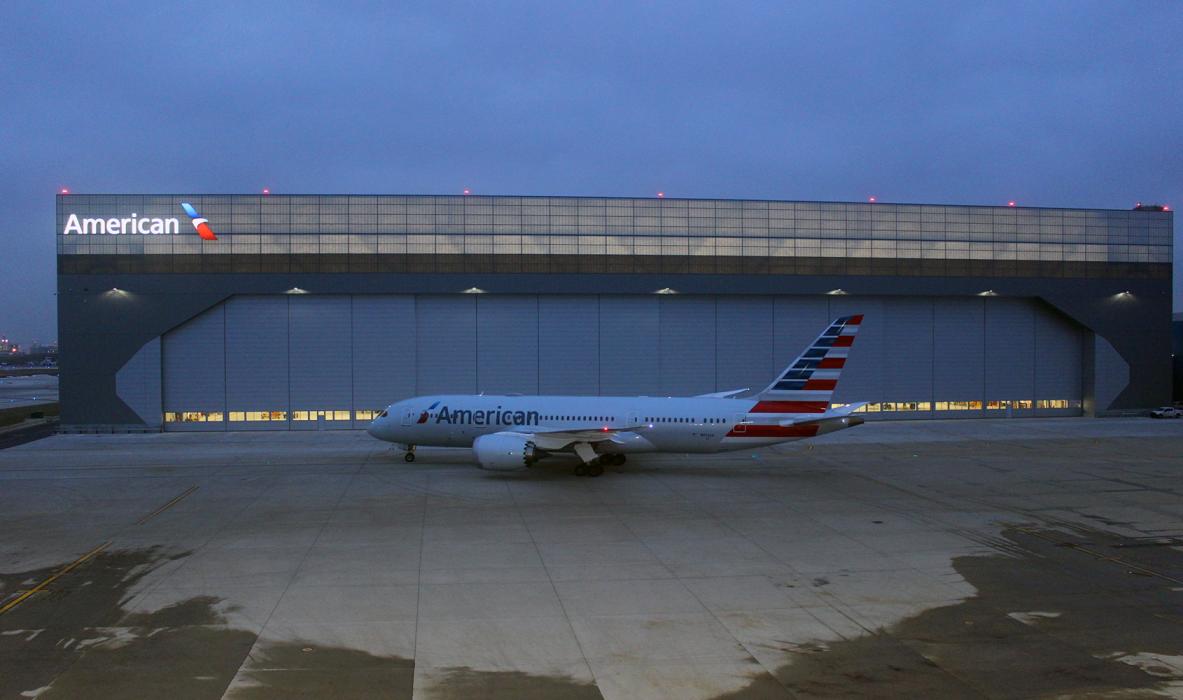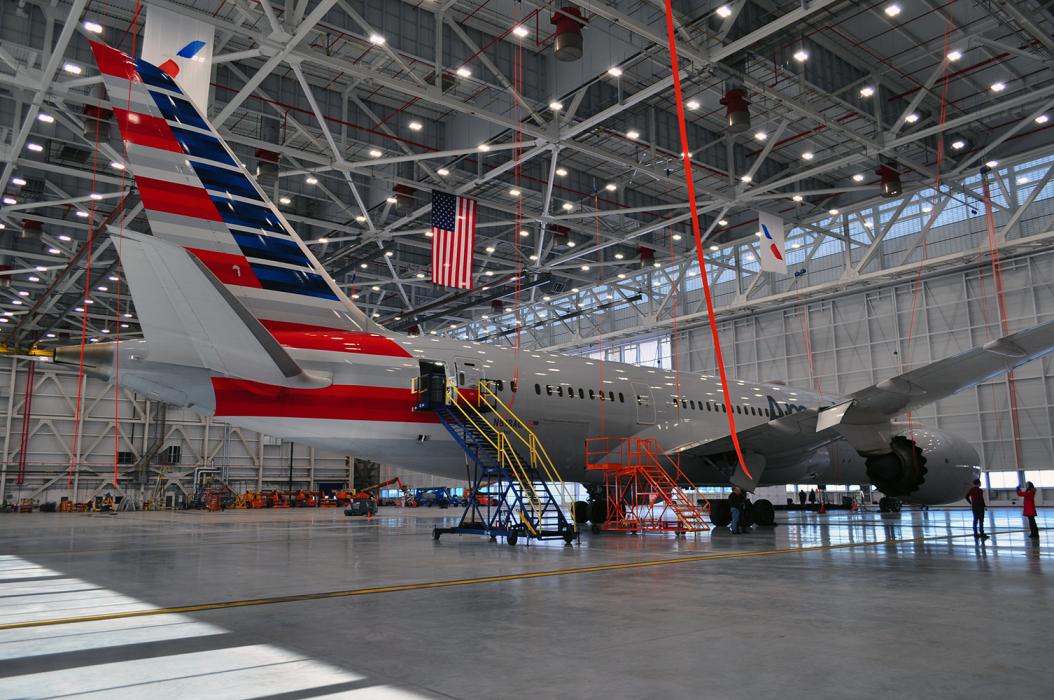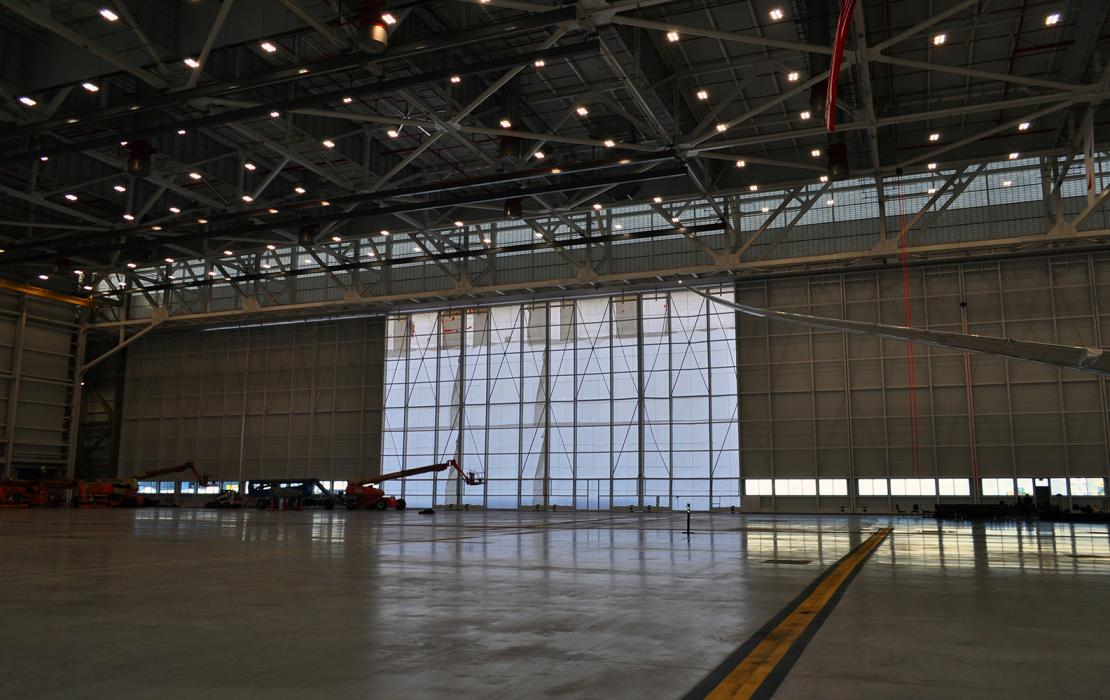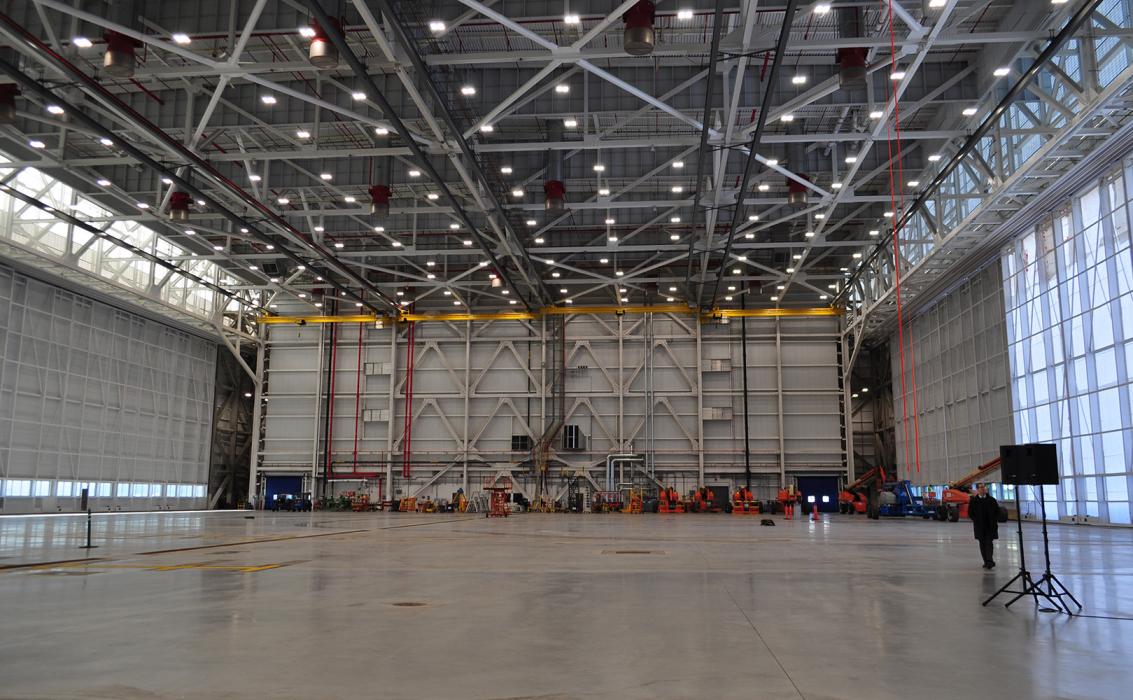American Airlines Maintenance Hangar
The first hangar built at O’Hare International Airport in three decades, "Hangar 2" replaced a smaller facility and improves the airline's aircraft and maintenance operations.
Overview
The first hangar built at O’Hare International Airport in Chicago in three decades, American Airlines "Hangar 2" replaced a smaller facility and improves the airline's aircraft and maintenance operations. Hangar 2 is O'Hare's largest hangar and can service six 737's or two 777’s simultaneously. The hangar is supported by four towers situated at the four corners of this 528-foot wide x 290-foot deep rectangular structure. It also features a clear door height of 70 feet and an internal clear height of 85 feet.
We provided structural design and construction engineering services to Ghafari Associates and W.E. O’Neil for the dual-access maintenance hangar, which opened in 2018.
Highlights
- The logistics of American Airlines’ operations mandated a hangar that can be accessed from both sides; therefore, this unique structure has been designed to accommodate hangar doors on both sides of the building. It has also been designed to accommodate bridge cranes that are hung from the underside of the roof trusses that will facilitate maintenance procedures.
- The roof design consists of two parallel hangar door box trusses spanning over the hangar doorways and supported by the towers at each end. This assembly creates a frame which provides the lateral force resisting system for the structure in the longitudinal direction. Infill trusses span in the transverse direction and are supported by the hangar door box trusses.
- Additionally, a horizontal truss is utilized at the bottom chord of the infill trusses to transfer wind loads to the vertical braced frames at each end of the structure. These braces are situated on the end walls between the towers at each end and provide the lateral force resisting system in the transverse direction.
- The slab-on-grade has been designed to accommodate the fleet of aircraft and maintenance vehicles that will utilize this hangar as well as to accommodate the several service pits that are buried beneath it.
- The hangar is supported on sixteen-inch deep piles that are driven close to rock, almost one hundred feet deep. The piles are battered to help support the horizontal thrust forces that are introduced into the foundations at the base of the towers at each end of the doorways.


